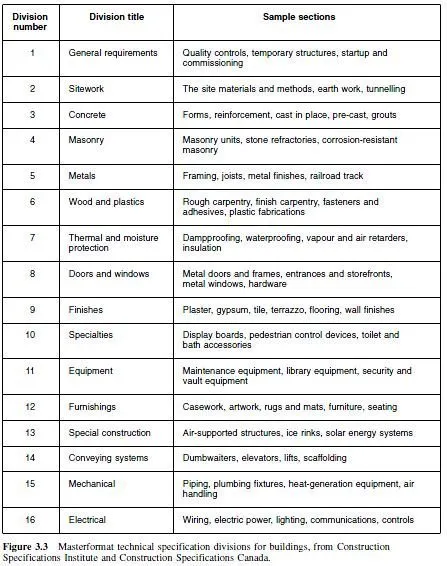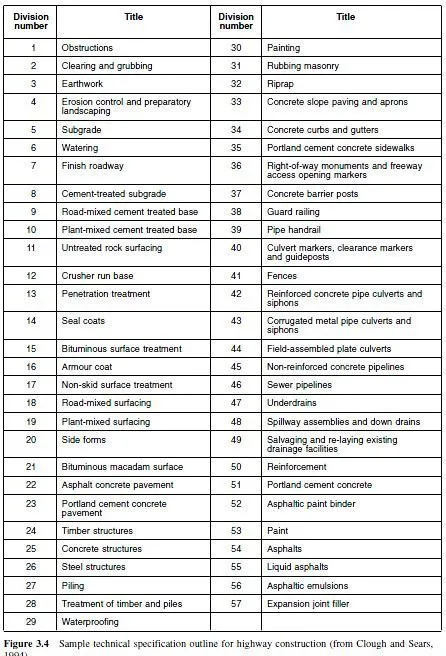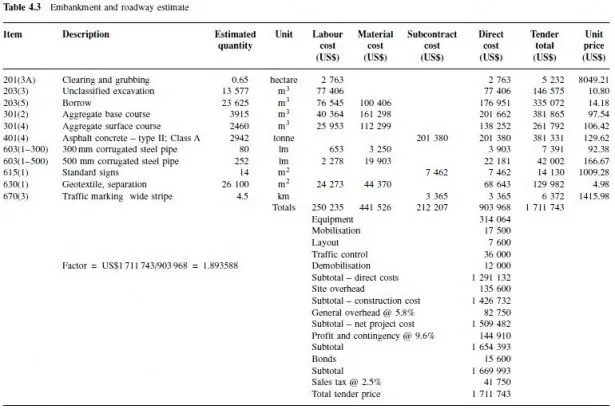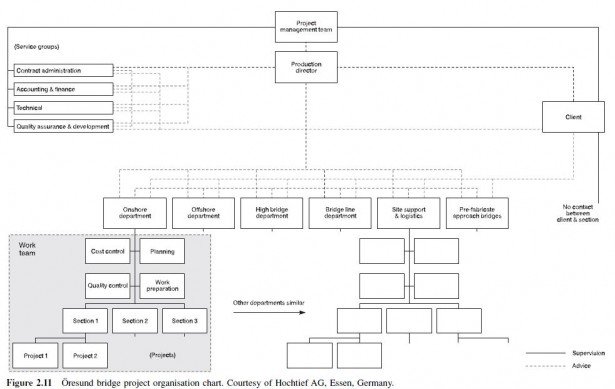The technical specifications are the portion of the documents the layperson usually thinks of when referring to the specifications, or specs. They contain the detailed technical provisions related to installation or construction of the several portions of the work and the materials incorporated therein. The order and grouping of the technical specifications vary depending on the type of work and the organisation preparing the documents, but most such materials tend to be grouped by the general order of construction. The Construction Specifications Institute (CSI) (Construction Specifications Institute, 2001) and Construction Specifications Canada (Construction Specifications CanadaDevis du Construction Canada, 2001) have developed a format for technical specifications that is especially suited to the construction of buildings, although it has been used in other types of construction, such as heavy construction. The format is based on 16 divisions, each related to a technical specialty such as concrete or electrical. The numbers assigned to each division are always used, even if a project does not use a certain division; for example, CSI Division 15 is always the mechanical specifications. Each division is subdivided into sections, which are defined for the particular project. In Figure 3.3, we show the 16 divisions, with a sampling of the kinds of section topics that might be included in a typical project.
There may be some confusion over the inclusion of general requirements (Division 1) in the technical specifications, because the totality of the documents also includes general conditions and supplementary general conditions. The distinction is that Division 1 general requirements contain technical requirements that apply generally to the project and thus to more than one of the divisions. All technical sections in the CSI format are divided into three parts, always in the same order, as follows: (1) general, covering scope, related work, testing and inspection, standards and certification; (2) products, including requirements for materials, equipment and fabrication, often including the names of allowable manufacturers; it is common practice to allow or equal products, with the burden on the contractor to demonstrate that the product is at least equal to the named allowable products; and (3) execution, which includes explicit workmanship standards for installation, erection and construction, required finishes, special instructions, testing requirements and closeout requirements.
While the divisions listed in Figure 3.3 can be applied to any type of construction, the breakdown is most suitable for buildings. For a highway construction project, the breakdown in Figure 3.4, as suggested by Clough and Sears (1994), might be appropriate. Another approach sometimes used in transportation construction is for the agency to publish a manual of standard general conditions and technical specifications that could apply to any typical highway, bridge or street improvement project. Then, for a particular project, a set of special provisions is issued that (1) amends and adds to the general conditions (as in the special conditions discussed earlier) and (2) provides technical construction details only for those provisions in the standard specifications that must be modified.
It is common practice to refer in the technical specifications to codes and standards developed by industry associations, rather than to repeat those standards in the specifications themselves. For example, a UK technical specification for concrete testing might refer to the provisions of BS EN 12350 Testing Fresh Concrete, which is a European standard test method developed by the European Committee for Standardisation and published by the British Standards Institution (British Standards Institution, 2001). If this reference is part of the concrete technical specifications, the contractor will be obligated to follow its provisions for such practices as sampling, slump tests and air content testing, even though the requirements are not contained directly within the specifications.



